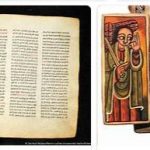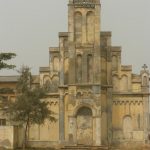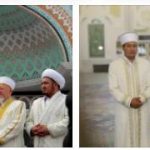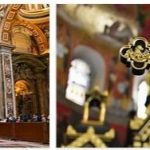Reforms of Zar’a Y ā ‛ qob (1434-1468). – While these heresies agitated the monks, in the mass of the population there always persisted reprehensible pagan customs and superstitions. The need was therefore felt for general reforms, which in King Zar’a Yā‛qob found the necessary authority to implement them; the king issued severe orders, forbidding the professing of the heresies mentioned above (which he himself refuted) and pagan customs and superstitions. But the Abyssinians, in whose veins flows so much Cushite blood, that is of an extremely superstitious race, did not especially abandon superstitious prayers, but gave them, as far as possible, a Christian appearance, inserting invocations to the Trinity, to the Virgin, to the angels and saints. Not very unlike in the West superstitions and pagan customs persisted towards Christian forms and intentions. Very well known in Abyssinia are: the prayer of St. Sisinnius against Werzelyā, a malefic being that (like the Jewish-Jewish Lilith, the classic στρίξ and the Lamia and the like) threatens the life of newborns; the “net of Solomon” and many others; such prayers with magical signs, written on small scrolls of parchment, are very common, such as amulets, even today. Zar’a Yā‛qob reiterated the observance of the Sabbath, determining which works are allowed to be done in it, he also gave formal provisions, so that no profanation would take place in receiving the Eucharist or in administering it to the faithful: others issued on the extreme unction, on the organization of worship and religious instruction, on the very numerous feasts of the Virgin, of St. Michael, etc., and other points; he also wrote against Jews and Stefanites. Thanks to all this, the Abyssinian church had a period of peace for many decades and also a literary activity flourished in the field of religious sciences. It has been stated that under Ba’eda Māryām (1468-1478) some Eutychian monks came to Abyssinia from Egypt and Syria, then condemned by a council and expelled, but this does not seem to deserve faith.
Muslim invasion – Jesuit mission – Reestablishment of the Alexandrian confession. – But in the first half of the century. XVI the church suffered a lot, especially for the Muslim invasion led by Aḥmed Grāñ or “il Mancino”; churches and monasteries were destroyed, and Christian holy books burned. Many Christians were forced to become Muslims, and Christian women united with Muslims. Terrified, King Lebna Dengel (1508-1540) and his successor, Claudius (1540-1559), to make friends with the very Catholic Portugal and have his help, sent letters of submission to the pope, expressing sentiments in favor of Catholicism. In 1564, the mission of Abyssinia was decided by the Society of Jesus (which among its aims had that of fighting heresies). Except that, once the danger was over, Claudius showed himself hostile to Catholics; and defended in his note Confessio Claudii, written on the end of his reign, the Alexandrian confession and exonerated himself from the accusation of Jewish customs. The composition or translation of works in favor of that confession was promoted, including the “Ṣawana nafs” or “Refuge of the soul” which in the form of a letter addressed to the king, defends the Alexandrian faith and other writings. The Jesuit mission naturally encountered many difficulties, but, later, and especially due to the intelligent work of Fr. Paez, it even came to the conversion of the king, Susnēos (Sisinnio, 1606-1632), who in 1626 made solemn profession of Catholic faith, and issued edicts not in conformity with the Alexandrian faith and imposed submission to the pope. By order of the king, his secretary Takla Sellāsē nicknamed “Ṭino” or “the Little”, he compiled an edict in the form of a letter to the people, in defense of Catholic doctrine. But the monks with the metropolitan, who were joined by the king’s enemies (and they also with arms) refused to obey him. The king, yielding to these pressures, abdicated in favor of his son Fāsiladas or Basilides (1632-1667), and the latter, soon becoming an enemy of the Catholics, returned the Alexandrian confession as the only permitted one in Abyssinia; the Jesuits were persecuted and driven out, their books burned; this especially under him and his successor John I (1667-1682). A few decades later, in 1716, three Franciscan missionaries (Liberato da Wies, Michele Pio da Zerba and Samuele da Beano) who entered Abyssinia under King Yosṭos (1711-1716) were condemned in Ašawā by a synod and stoned. Under Susnēos (1606-1632) also arose a madman or impostor, who gave himself the name of Za-Krestos, and claimed to be born of the Virgin in a second incarnation; he was condemned and put to death and his disciples scattered. For Ethiopia religion and languages, please check ezinereligion.com.
The religious disputes with the Jesuits rekindled the zeal of the indigenous clergy, and led to the revision of the books of the cult, such as, for example, the Sinassario. And the struggles also gave rise to a subtle theological speculation, that on anointing and union, which divided the Abyssinian church into two main camps, one of the monks of Takla Hāymānot or Dabra Libānos and the other, to the north, of Ēwosṭātēwos; while another sect was formed later by the disciples of Zar’a Buruk. This gave occasion or pretext even to bloody fights, as happened in 1716. And the restlessness of the monks was a clear example in the second year of the reign of John I (1667-1682), when their insubordination was barely suppressed by the king and by the dignities of the church.





